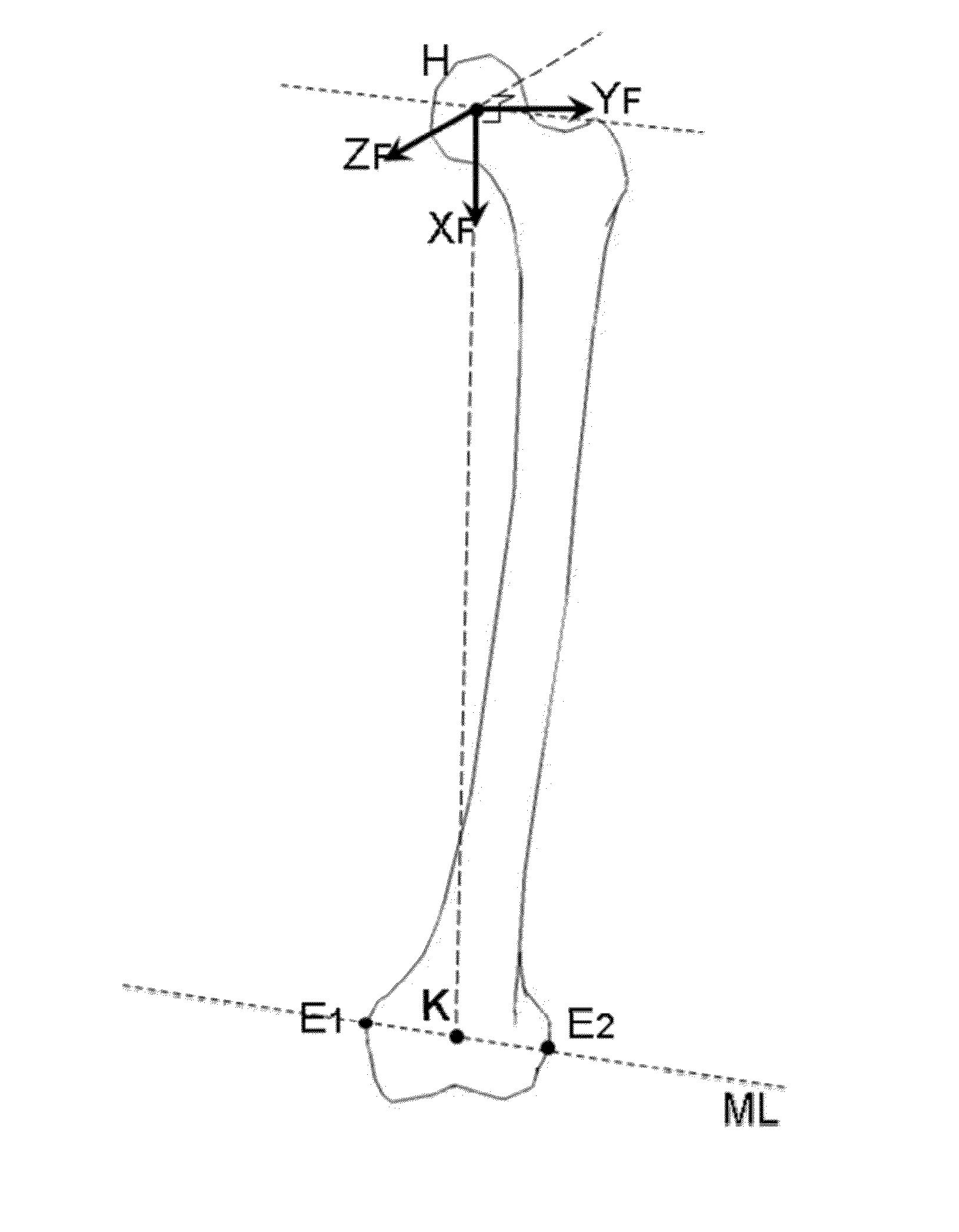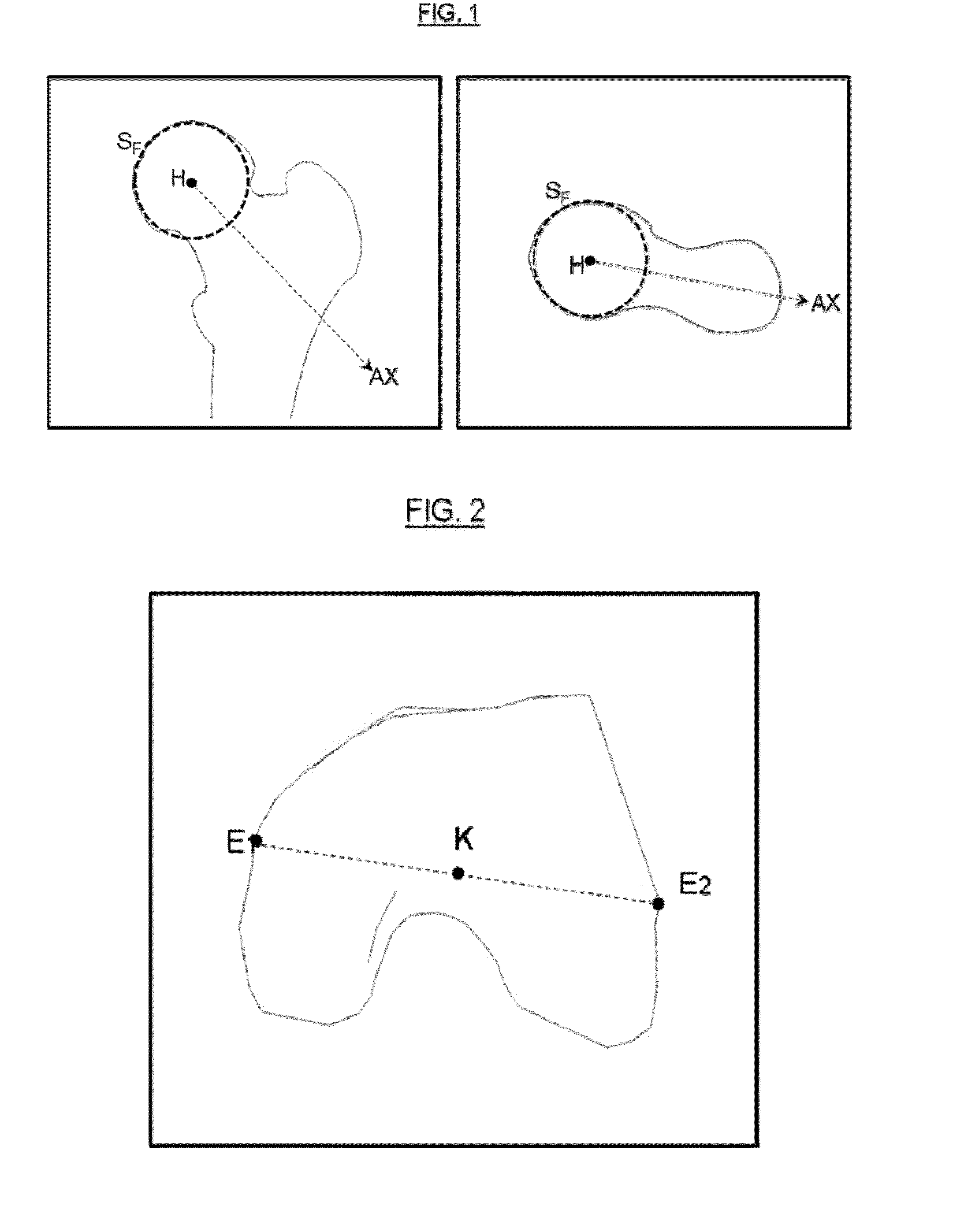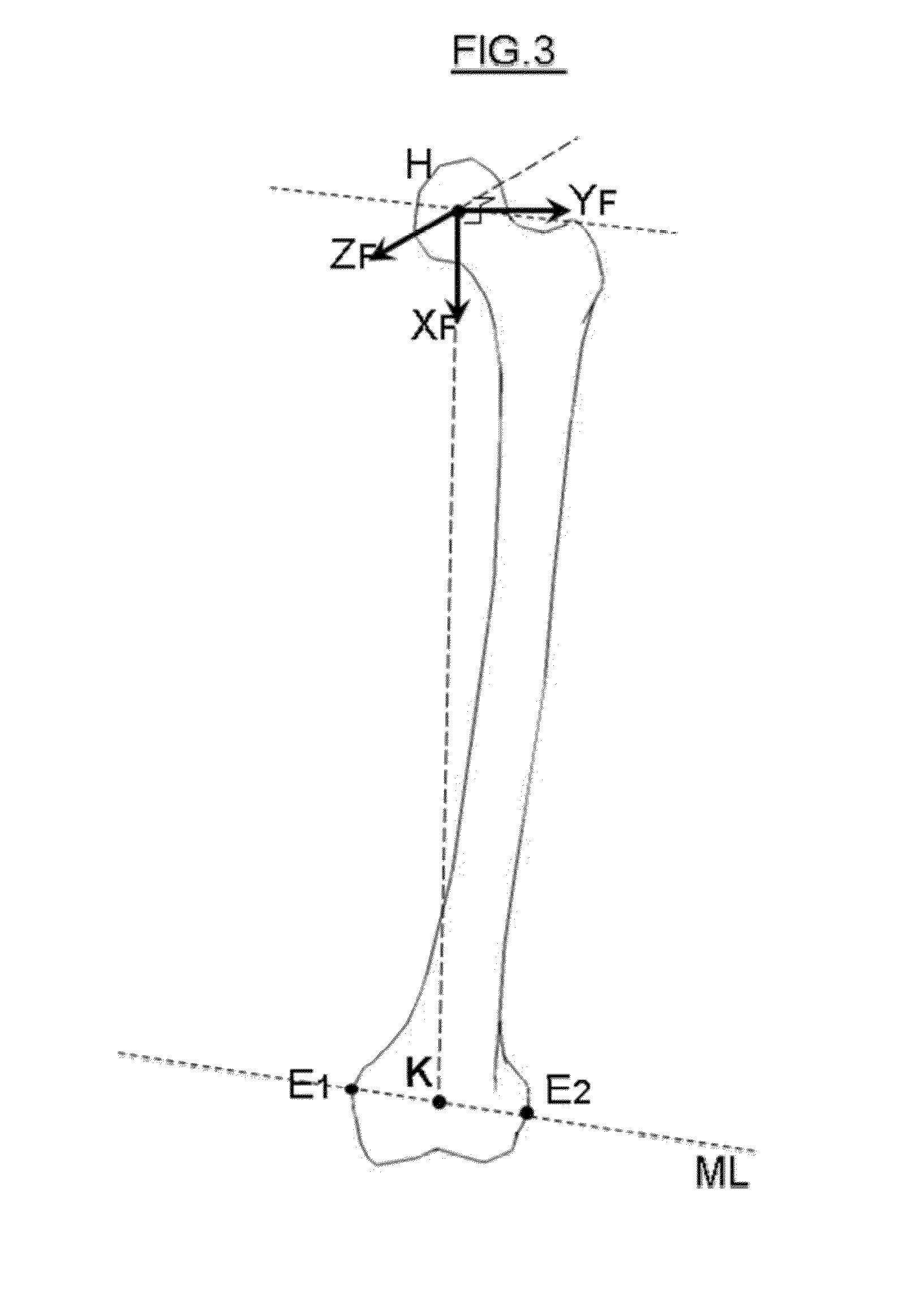Method for determining articular bone deformity resection using motion patterns
a motion pattern and articular bone technology, applied in computing, instruments, electric digital data processing, etc., can solve the problems of difficult to determine the correct and full diagnosis of the pathology, the repetitive impact of the proximal femoral neck on the articular bone deformity, and the complex structure of the human body
- Summary
- Abstract
- Description
- Claims
- Application Information
AI Technical Summary
Benefits of technology
Problems solved by technology
Method used
Image
Examples
Embodiment Construction
:
[0045]In reference to the drawings, a method for determination of a bone resection of a deformed surface of articulation bone from real-time simulation of movements described by motion patterns will be hereafter described. The method is used for determining an optimal corrected surface of a bone of the articulation using said motion patterns.
[0046]In the following description, the method will be described with reference to the hip articulation. Thus, the method will be primarily used for defining a resection of a deformed surface of the pelvis. However, the invention is not limited to the application to the pelvis but can be used for defining a resection of a deformed surface of any bone of any articulation. The person skilled in the art will easily adapt the method of the invention to such articulations.
[0047]A computer is used to run a program that implements the algorithms and methods described below, with the capacity of reading or writing files on a disk or internet network, w...
PUM
 Login to View More
Login to View More Abstract
Description
Claims
Application Information
 Login to View More
Login to View More - R&D
- Intellectual Property
- Life Sciences
- Materials
- Tech Scout
- Unparalleled Data Quality
- Higher Quality Content
- 60% Fewer Hallucinations
Browse by: Latest US Patents, China's latest patents, Technical Efficacy Thesaurus, Application Domain, Technology Topic, Popular Technical Reports.
© 2025 PatSnap. All rights reserved.Legal|Privacy policy|Modern Slavery Act Transparency Statement|Sitemap|About US| Contact US: help@patsnap.com



